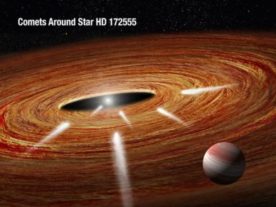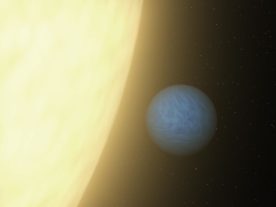
Ants Goof Off Too; Milky Way Steals Stars; Astronomers Spot Exocomets
Ants Balance Work and Rest to Maintain Colony Ants have a reputation of being dedicated and hardworking creatures. But did you know that like humans, ants also seek to maintain a healthy balance of work and rest? While an ant colony appears to be filled with busy workers, according to new research, there are also […]
Astronomers Spot 80 of the Oldest Galaxies
Advancing technology is making it possible for scientists to investigate the early universe. About 200 million years after the Big Bang, it is thought that clumps of condensed primordial cold gas clouds provided material for the first stars to be born. As stars were created they formed small galaxies. An international team of researchers are […]

A Blast of Gamma Rays from Halfway Across the Universe Detected
Back in April 2015, a surge of high-powered gamma rays from half-way across the universe crashed into Earth’s atmosphere. But, according to the Harvard-Smithsonian Center for Astrophysics in Cambridge, Massachusetts, the burst of gamma rays didn’t put any of us in danger and produced no noticeable effects since the high-energy rays are blocked by Earth’s atmosphere. Astronomers, using […]

Ground-Based Telescope Observes Exoplanet Transiting Bright Star
For the first time, an international team of astronomers has used a ground-based telescope to detect and observe the transit of a planet in front of a Sun-like star outside of our own solar system. Until now, only space-based telescopes were capable of detecting the transits of exoplanets as they passed by bright stars. Distortions […]
